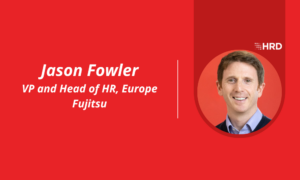Workforce planning 101: How to design a workforce that thrives
- 6 Min Read
During this time of great upheaval, people leaders have an opportunity to redesign the way their organisations work. As we awaken to a potentially new world of work, Janine Truitt gives her guide to workforce planning and organisational design with people and productivity at the forefront.
- Author: Janine Nicole Dennis
- Date published: Apr 21, 2020
- Categories

In the earlier half of the 2010’s, Deloitte Insights reported that 57% of HR Executives felt their organisations were weak when it came to helping employees to manage demanding schedules and expectations. This was one of the first in-depth looks at the phenomenon of the ‘overwhelmed employee’.
As the price of doing business has continued to skyrocket, C-Suite leaders have been regularly looking for ways to do more with less in every facet of business. But unlike the decision to go from purchasing one type of post-it to another to save costs, the same cannot be true when it comes to workforce planning and your employees.
It goes without saying that employees make business possible. Establishing the precise quantity of employees required, while designing an ecosystem that is inviting, organisationally-aligned and that meets the legal, moral, and ethical standards that support human labor is no simple consideration. Before doing any of this, business leaders must first define their positions and understand what it will take for both current and future employees to satisfy the needs of the business.
Go back to basics
When is the last time you did a job analysis of your positions? More importantly, when’s the last time you conducted a job analysis of jobs that have high attrition rates?
Job analysis is a fundamental principal of organisational design and industrial/organisational psychology. It allows us to study the tasks, duties and responsibilities involved in carrying out a job, while assessing the qualities that are required to be successful in it. Incorporating job analysis as an ongoing organisational activity can illuminate significant challenges in a given role as well as bottlenecks in processes, and overall protocol that may be variables preventing individual contributors and teams from producing successful outcomes.
In an outcome-driven world, we have become used to advertising job roles that haven’t been revisited for relevancy of tasks, duties and responsibilities. We have also become accustomed to overloading a single role to save a dollar. An example of this is when a company either loses a key employee to voluntary or involuntary termination and instead of refilling the vacant role, the organisation decides to create some sort of hybrid role comprised of two distinct roles that probably should have remained distinct.
Let’s do some math here: one full-time equivalent plus one full-time equivalent equals a hybrid role with duties at 200%. You may have reduced some of the tasks and responsibilities, but if all of the requisite duties are labour-intensive and require more time to execute than a typical eight-hour day will allow, you have just overburdened a role and are likely to push a great employee to the brink of burnout, or out of the door.
Keep an eye towards the future of work
As we are all forced to slow down at this time, a laser focus on proper job descriptions, job specifications, evaluation, and performance criteria is paramount.
It is a unique time for businesses to identify where they can improve the efficiency of how work gets done and the quality of the employee experience in a time where we have an opportunity to re-imagine how we work. In the near future, we will collectively discover that many work activities and/or the manners in which we carry out work activities were unnecessary and even archaic in nature.
As we awaken to a new way to work, it’s important we consider a few basic tenets of workforce planning so we are able to cultivate and support the workforces we will need to continue operating in business.
- Workforce planning is a continual process
The goal of workforce planning is to align the needs of the business with the capabilities of the workforce and external drivers of business on a continual basis. We got away with a “set it and forget it” model for some time. Now, that economic and public health factors are sure to have a sustained and spontaneous effect on how businesses operate, there will need to be a lot of flexibility built into roles, duties, work systems and even performance expectations. - Identify critical roles and teams
Who are those critical individual contributors and teams that keep the company running optimally? Evaluate whether those roles need to be modified or remain the same. Also, consider what kind of support they would require should the workforce need to be permanently reduced or furloughed. Having frank conversations with those contributors about how they work today and collecting thoughts on how they see their role and the role of the team transitioning based on current and anticipated business realities can give you a lens into the sorts of challenges they may face so the organisation can be proactive about providing flexibility and support. - No more overburdened roles
Part of the beauty of a solid workforce plan is having all duties, roles, responsibilities and capabilities captured within a balanced, finite set of jobs in an organisation. Under ideal circumstances, no one is carrying the weight of three roles as one individual contributor. This isn’t to say that you can’t delegate duties to team members to make up for a deficit for short period of time, but the point is it should be a short period of time if another role cannot be created to fill in the capability gap. Sometimes the gap between not being able to pay another salary and still having critical work to assign requires some innovation on the part of HR Leaders and C-Suite, to redesign jobs in such a way that the work gets done with minimal burden to the workforce or business. When there is already an operational and financial crunch, the last thing you need is your workforce stressed out and unhappy. Sometimes a smaller, agile team with the proper mix of knowledge, skills and abilities, partnered with the right leadership and support, can be more efficient in the long term and potentially preserve operational budget.
There are many components to ensuring the proper cultivation and sustainability of a workforce. Being creative with organisational and workforce design while also keeping legal requirements for job classifications top of mind is crucial work in a time where cutbacks are inevitable, but business must carry on.









